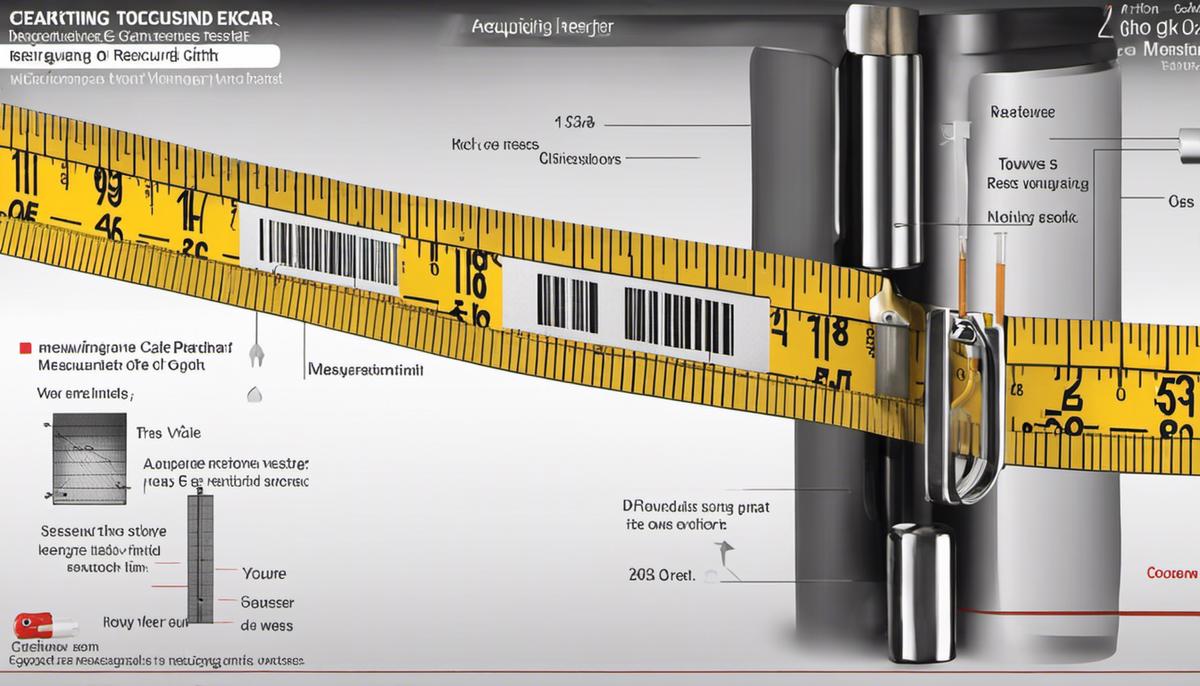Understanding our body’s dimensions is a critical aspect of overall health and well-being. Among these, neck girth measurement holds significant value due to numerous reasons, be it for tailoring a perfect fit clothing, tracking fitness goals, or evaluating potential health risks. This comprehensive article aims to demystify what neck girth measurement is, why it plays a crucial role, and what units are typically used in its measurement. Additionally, it explores the different applications of neck girth measurement in medical and fitness realms. Not stopping at the basics, it further dives into the precise procedure for its accurate measurement, the tools needed, and valuable tips for ensuring precision.
Understanding Neck Girth Measurement
Understanding Neck Girth Measurement
Neck girth measurement is the procedure of measuring the circumference of a person’s neck. It is a simple and non-invasive tool performed using a flexible measuring tape, that is essential in various areas such as health, fitness, and fashion. This measurement holds significance in determining body composition, assessing obesity, predicting cardiovascular risk, and fitting clothes or accessories appropriately.
Standard Units of Neck Girth Measurement
The typical units of measurement are either inches or centimeters, depending on the country of reference. In the United States, neck girth measurements are usually in inches. However, many scientific research studies may report measurements in centimeters to maintain standardization across international demarcations.
Significance of Neck Girth Measurement
Neck girth measurement is a significant dimension particularly for health assessments. In the medical field, it plays a pivotal role as a cardiometabolic risk indicator. Researchers have found that larger neck circumference can indicate a higher risk of developing chronic disorders like diabetes, hypertension, and heart disease. Furthermore, it is also a reliable index to predict obstructive sleep apnea.
To this end, neck girth measurement is crucial for weight management. A reduction in neck size often points to successful weight loss. This simple measurement can also prove useful in monitoring the progression of children’s normal growth and detecting abnormal growth patterns.
Neck Girth Measurement in Fitness
In the fitness industry, measuring neck girth forms part of body composition assessment. Bodybuilders and athletes often monitor their neck size alongside other measurements including chest, waist, hips, and limbs. It helps them track their progress, adjust their workout plan, and work towards their fitness goals. A muscular and proportional neck is often a sign of a balanced and comprehensive workout regimen.
Neck Girth Measurement for Medical Purposes
Conversely, in the medical field, neck girth measurements are fundamental in diagnosing health conditions. For instance, a larger neck circumference can imply metabolic syndrome, while a smaller circumference might indicate malnutrition. Medical practitioners also use neck circumference measurements as a tool to diagnose conditions such as obesity or sleep apnea. Additionally, it provides an efficient way of tracking weight loss or gain, or observing the symptoms of certain diseases.
In a nutshell, neck girth measurement serves several important purposes, each differing based on the field of application. Whether for athletics or health purposes, it’s a simple yet effective method of monitoring changes in the human body.

Procedure for Measuring Neck Girth Accurately
Tools Required for Measuring Neck Girth
For an accurate neck girth measurement, you will need a flexible measuring tape that can easily wrap around your neck. Such tapes are commonly used in sewing or tailoring and can be purchased at just about any craft or department store. Innovatively, if you do not have a flexible measuring tape on hand, you can use a piece of thin rope or string and then measure the length of that rope or string against a standard ruler or a metal measuring tape.
Procedure for Measuring Neck Girth
Firstly, stand in front of a mirror so you can easily see what you’re doing. Remove any clothing or jewelry that might interfere with the measurement. Pull your hair up if it’s long enough to get in the way.
Tilt your head slightly up, resting your fingers on the prominent bones around your throat, this is known as the Adam’s apple in men. The point just above your fingers is where you’ll want to measure your neck girth.
Take your flexible measuring tape and wrap it around your neck at the point you’ve determined. Ensure it is not twisted and lies flat and evenly against your skin all the way around.
The tape should be snug but not tight, it should not indent the skin. You should be able to comfortably insert a finger between the tape and your neck.
Look in the mirror and take note of the measurement. Make sure not to pull the measuring tape too tight or leave it too loose. A misconception is to tighten the tape for a smaller measurement, but this would not give an accurate reading.
Tips for Accurate Neck Girth Measurement
To ensure the accuracy of your neck girth measurement, it is recommended to take multiple measurements. This is because minor variations in how you hold the tape or where exactly it lies can cause small differences in the measurement. Take at least three measurements and use the average as your final measurement.
Make sure to measure on bare skin. Clothing will add extra girth to your measurement. Avoid measuring immediately after exercising as the neck muscles might be slightly swollen.
Always measure your neck girth at the same time of day because your body’s water content oscillates throughout the day, and this can influence your body dimensions slightly.
Lastly, remember to write down each measurement immediately after you take it, so you don’t mix up or forget the measurements, ensuring an accurate record.

Interpreting Neck Girth Measurements
Understanding Neck Girth Measurements
Neck girth measurements are a vital and basic body measurement used in several different contexts, from clothing sizes to fitness goals and health assessments. Interpreting them appropriately can make all the difference in each of these areas. The neck girth is simply the circumference of the neck, measured by encircling the neck with a flexible measuring tape, at the point just below the Adam’s apple for men, and same level for women.
Applying Neck Girth Measurements in Clothing Sizes
In the clothing industry, neck girth measurements play a critical role, especially in determining sizes for shirts, blouses, and other upper body garments. For instance, men’s dress shirts are often sized according to neck circumference, with the size being the length in inches around the neck. To interpret a neck girth measurement for clothing sizing, simply match the measurement in inches or centimeters, as applicable, with the sizing chart provided by the clothing brand or designer.
Neck Girth Measurements for Fitness Goals
In the fitness realm, neck girth measurements are used to track progress and gather information about body composition. A decreasing neck girth might indicate fat loss, while an increasing neck girth may signify muscle gain (as in weightlifters). However, it’s imperative to take other measurements, like the waist, hips, and chest, into account for a comprehensive view of body changes because neck measurements alone can be somewhat misleading.
Implications of Neck Girth in Health Assessments
Finally, neck girth measurements also have significant implications for health assessments. These measures can provide vital clues towards detecting potential health issues. For example, a significantly large neck girth can be indicative of obstructive sleep apnea, a medical condition in which breathing repeatedly stops and starts during sleep. Similarly, the American Heart Association has identified neck circumference as a potential indication of central obesity, considered a risk factor for heart disease and other obesity-related illnesses.
Each of these applications emphasizes the importance of accurate neck girth measurements and appropriate interpretation. Understanding the context of these measurements helps garner an accurate and useful interpretation, whether tailoring a shirt, designing a fitness program, or conducting a health assessment.

With the insights provided in this article, you’ll hold the knowledge to accurately measure and interpret your neck girth measurements. The skills you gain can be applied in various contexts, whether you’re tailoring your clothes, establishing a baseline for your fitness journey, or performing a self-assessment of potential health risks. Remember, keeping track of neck girth isn’t solely about noting down a number; it’s about understanding what changes in those measurements symbolize about your health and wellness. Empowered with this knowledge, you are sure to make more informed health and lifestyle choices in the future.
